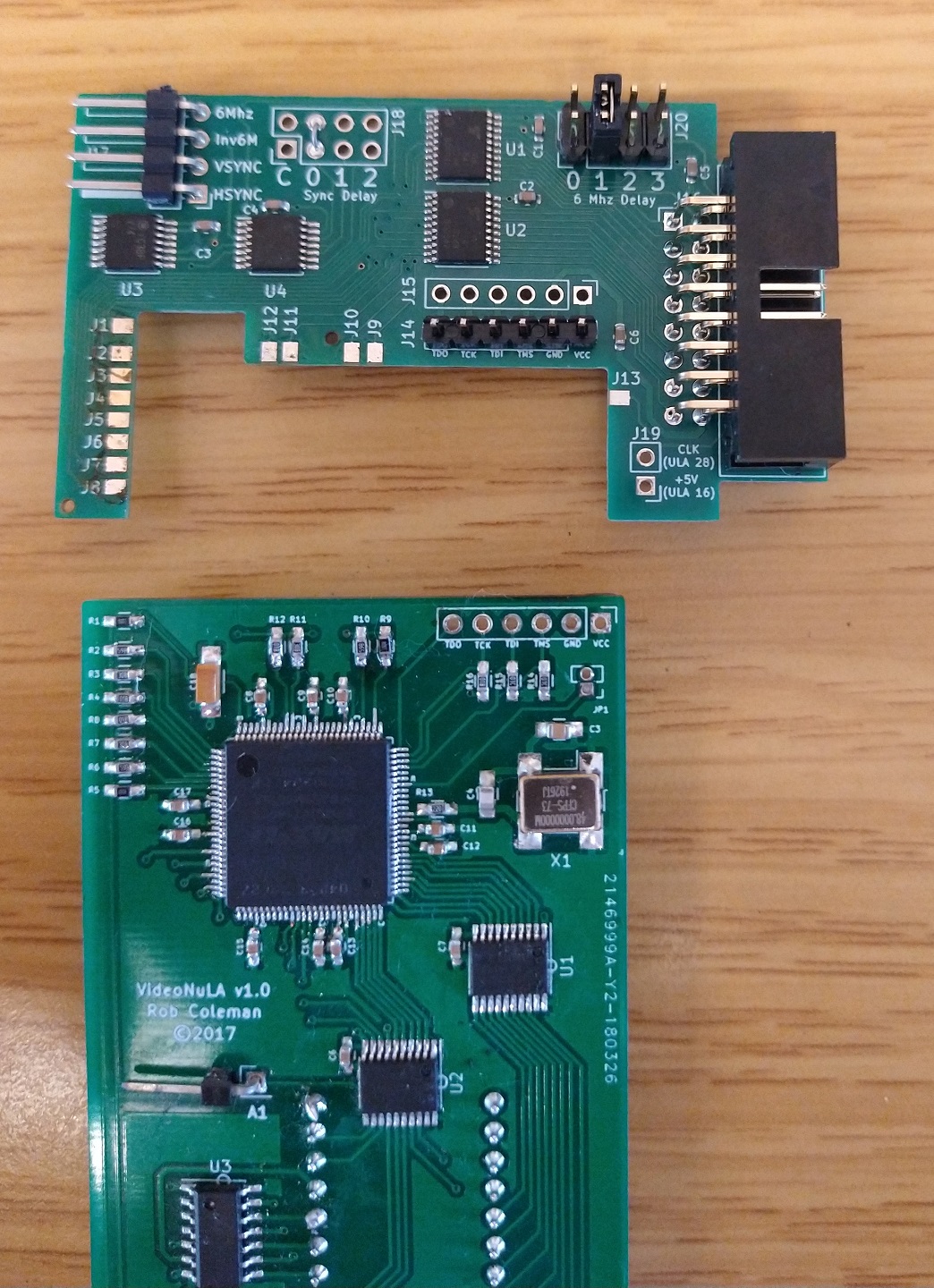-
Notifications
You must be signed in to change notification settings - Fork 6
NuLA Adapter
Nula Adapter Installation
Before starting, check that 6Mhz is being output on JP1 of the Nula (near the JTAG header)
If that isn't being generated, contact RobC for a firmware update or consider using the clock fixer to generate an alternative 6Mhz
Push the pin header J14 of the adapter into the JTAG holes on the NuLA

Only solder the GND pin (2nd from edge) as soldering multiple pins will make it very difficult to remove if required
The other pins are only used for JTAG reprogramming

Heat up the GND pin with a soldering iron and adjust the adapter board until it is lying flat on top of the resistors with just their ends visible

Solder wire jumpers from each resistor end to J1 - J12

Solder a wire jumper from JP1 on the NuLA to J13 on the adapter

Solder the wires to the ULA header pins 16 and 28

Connect the Hsync and Vsync outputs of the 6845 (Pin 39 = Hsync, Pin 40 = Vsync) to the adapter
Isolate Pin 19 (TR6) of the SAA5050 by either cutting and bending it out, cutting the pcb track or cutting the pin of the TTL chip connected to it
Connect the 6Mhz out of the adapter to pin Pin 19 of the SAA5050
Alternatively connect the Inv6M which is the inverted version of the 6Mhz
Jumpers
The Sync jumper setting allows 0, 1 or 2 gate delays (default 0 delay)
The "C" setting is Composite bypass which bypasses the sync regenerator and uses the BBC composite sync fed to the hsync input
The 6Mhz delay jumpers allow 0, 1, 2 or 3 gate delays (default 1 delay)
Testing
Use *VNPALETTE to start the palette programming menu and use R and Shift R then G and Shift G then B and Shift B to step up and down the 16 possible levels to confirm they are displayed correctly.
Usage
Connect the NuLA adapter to an RGBtoHDMI with a 12 bit extender fitted using a 16 way ribbon cable.
Select one of the NuLA profiles in the BBC CPLD
The NuLA 3bpp Mode7 profiles don't show the extra NuLA colours in mode7 but use the high quality mode7 deinterlacing.
The NuLA 12bpp Mode7 profiles will show the extra NuLA colours in mode7 but only use weave deinterlacing in mode7.
If you are happy that everything is working and reliable after several days testing, you can solder the remaining JTAG pins for extra mechanical strength and that will also allow reprogramming via J15 but it will be very difficult to remove after that.
Construction (current designs)
- Bill of Materials (12-Bit Board)
- Bill of Materials (12-Bit Extender)
- Bill of Materials (Analog Board)
- Bill of Materials (TTL Buffer Boards)
- Bill of Materials (Pi Zero)
- Cables
- Assembled boards for sale
Construction (older designs)
- Bill of Materials (6/8-Bit Board)
- Bill of Materials (6-Bit Board)
- Bill of Materials (3-Bit Board)
- Bill of Materials (Atom Board)
- Assembly Notes (Atom Board)
- CPLD Programming
User Documentation